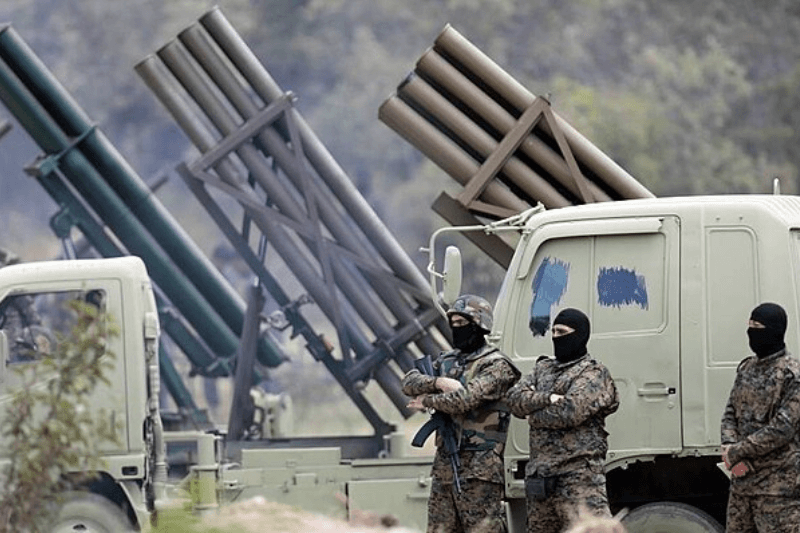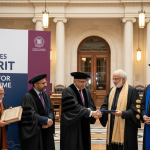
(C)Wikiwand,strengthening the lebanese armed forces a critical battle against hezbollahs dominance amid international support
European authorities realized at a recent international summit in Paris the crucial part the Lebanese Armed Forces (LAF) play in stabilizing Lebanon among rising hostilities. Aiming to increase the military’s capability during a turbulent era in the country’s history, a $200 million donation announcement involving funding from the U.S., France, and Germany seeks to “The Lebanese army has a decisive role to play, today more than ever,” French President Emmanuel Macron said, stressing the seriousness of the matter. Still, the LAF has great challenges in doing this important task.
The Lebanese military battles with limited resources and a difficult political environment even though it has gotten about $3 billion in U.S. money since 2006. The military forces are not suited to properly guard Lebanon’s borders and take on Hezbollah, the Iran-backed militant organization that has become even more powerful in the country. While the LAF consists of just 70,000 to 80,000 active-duty troops, estimates indicate that Hezbollah employs up to 100,000 fighters. Hezbollah has tens of thousands of rockets, missiles, and drones; the Lebanese military has a small fleet of active jet aircraft and lacks sophisticated air-defense systems.
Background Information and Hezbollah’s Development
The limits of the military can be found in past wars such as the Israeli invasions of Lebanon and the Lebanese Civil War. “It is one of the weakest armies in the Middle East,” said Amal Saad, a politics lecturer at Cardiff University and authority on Lebanese issues. This vulnerability helped Hezbollah arise in the 1980s as the Lebanese army battled to offset Israeli military operations. Notwithstanding a UN resolution aiming at disarming Hezbollah after the 2006 conflict, the militant group kept building its weapons in defiance of international attempts.
The IAF (Israel Air Force) assault of Lebanon recently has further muddled matters. Inspired by Hezbollah’s constant missile strikes on northern Israel, the Israeli military entry into Lebanon set off concerns regarding the possibility of a more general battle. Prioritizing national stability and avoiding open confrontation with the highly developed Israeli military, which could compromise U.S. assistance, the Lebanese armed forces decided to leave the border area.
The complex sectarian dynamics of Lebanon—which include Christians, Sunni Muslims, Shia Muslims, and Druze—adds to the operating difficulties of the LAF. Tasked with negotiating these divisions, the military sometimes results in contradictory allegiances and complicates its capacity to act forcefully. The LAF’s complex relationship with Israel, which still is seen as an enemy, has made the United States reluctant to offer weapons. Moreover, the requirement of the military to cooperate with Hezbollah introduces still another level of complexity to its activities.
Demand for improving the Lebanese Military
Notwithstanding these obstacles, some Lebanese officials contend that stability of their nation depends on a capable military. Head of a Christian political group hostile to Hezbollah Samy Gemayel said, “The only military alternative to Hezbollah is the Lebanese military. It should be reinforced. Hezbollah would be running over the whole nation without it. Since the end of the civil war in 1990, the LAF has traditionally been a uniting agent in Lebanon, disarming nonstate actors and acting as a middleman between conflicting groups. But Hezbollah’s ascent has eclipsed military attempts, allowing the armed group to confirm political authority.
The financial crisis of Lebanon has aggravated the major budgetary restrictions the military there has experienced lately. Funding from the United States and Europe has become increasingly important, particularly in light of the Biden government’s intervention last year to assist troops’ pay in face of dire financial circumstances. Still, inadequate pay forces many troops to take second jobs in order to make ends meet, which makes residents joke that military men manage food deliveries most of the time.
With U.S. money making more than half of the LAF’s military outlay in 2022 ($241 million), The most recent pledges from world leaders want to raise the military’s capacity for fuel, weapons, and recruiting of 6,000 new troops. Emphasizing the necessity for the LAF to be enabled, U.S. special envoy Amos Hochstein said it must be let “to actually be deployed in south Lebanon and to do its job.”
U.S. officials are wary of the degree of military assistance given despite the urgent need for support because of worries about U.S. weaponry possibly being acquired by enemies. Historical concerns have resulted in restrictions on arms deliveries; earlier requests from the LAF for missile-equipped ships were rebuffed. The complexity of Lebanon’s security scene calls for thorough review of U.S. support plans.
Prospect for a New Age
Although Lebanon’s military has suffered great losses, some analysts think the LAF may have fresh chances in the current surroundings. Director of the Conflict Resolution and Track II Dialogues Program at the Middle East Institute Randa Slim noted that continuous strife had seriously undermined most of Hezbollah’s leadership and weaponry. She contended that thanks to more resources and training made possible by foreign backing, the LAF has developed over years.
The international world has to understand how important the LAF is in keeping stability and stopping Hezbollah’s supremacy while Lebanon negotiates its complex sociopolitical terrain. There is promise for rejuvenating the Lebanese military and promoting a more safe and united Lebanon with the dedication of more financing and support from Western leaders. Though the obstacles are great, a deliberate attempt to improve the armed forces would help to bring about a more stable future.



